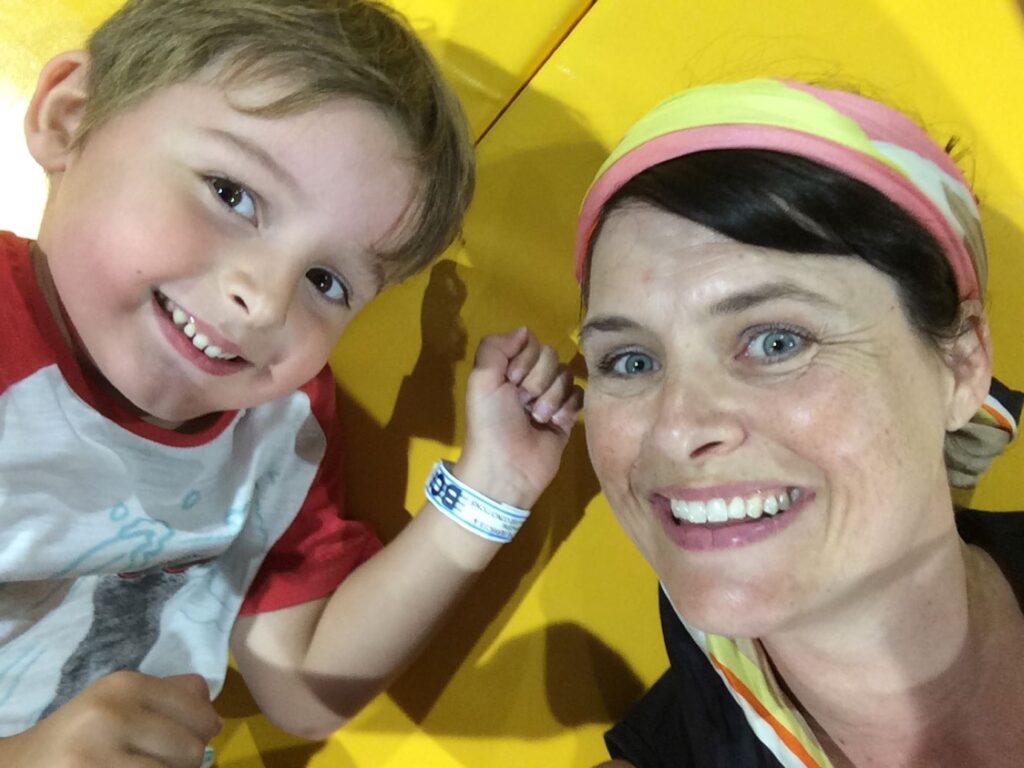Ninety per cent of women feel solely responsible for their family’s schedule, according to recent research from Gether. Every mum knows the drill; juggling schedules, coordinating activities, remembering everything from crazy sock day to the dreaded book week.
Is this a personal issue? Far from it.
The mental load of managing a family holds women back from their careers — a $12 trillion global GDP challenge. In Australia alone, closing the workforce participation gap could add $30.7 billion to the economy by 2050, according to government estimates.
But what does mental load cost you personally? For Australian mums, this invisible tax adds up to $22,880 annually. That’s based on 6–10 hours a week of family management, at the average skilled worker wage. You can calculate what your mental load is worth here.
The mental load wrecked my health and forced me to step away from my career.
In 2017, I was a regional Executive Creative Director, leading a team across Asia with clients from New Zealand to Hong Kong. I loved my work. I had a great team, award-winning projects, and exciting challenges.
At home, I had two cheeky little boys, a dog, a supportive partner with an equally demanding job, no nearby family support and sky-high expectations of myself. With solid childcare and help around the house, I thought I had the juggle under control. I even joked about it on facebook.
Then I got sick. First a few colds, the flu, then “walking pneumonia” and finally exhaustion. I chalked it up to normal mum fatigue, we’re all tired right? But it spiraled into diagnosed adrenal fatigue, a.k.a. total burnout. I left my role, relocated with my family, and took a year to recover. Another year of studying followed before I returned to work in 2020.
It cost me years of income, my health, and a hard lesson.
The impact goes beyond numbers: many women are ‘paying’ for this invisible labor with their well-being. The mental load of motherhood isn’t just draining—it’s debilitating. In 2024, the Liptember Foundation identified burnout, mental load, and balancing work and family responsibilities as the top three factors driving the decline in women’s mental health.
Professionally, the costs are just as severe.
Have you ever held back from a career opportunity because of family responsibilities? You’re not alone.
When my children were small I gave up a creative director role so that I could work part time. In the naughties leading a team meant 60+ hours a week in the office. Today, women are still five times more likely than men to cite children as the reason they can’t work more. The societal expectation of being the CEO of the home AND a professional forces many women to choose between career growth and family.
For businesses, mental load is at the heart of a talent retention crisis, undermining gender diversity and profits. I’ve seen firsthand how the weight of invisible labor stalls the progress of talented women on leadership trajectories – a loss that comes at a significant financial cost. Australian companies with gender-diverse leadership report 30 per cent higher profit margins than those with less diversity.
Globally, the cost is a persistent gender gap. Closing it requires lifting and equally sharing the mental load. It’s time to move beyond outdated 1950s expectations that men should always be present at work and women will take care of everything at home. By enabling women to thrive in their careers and giving men the opportunity to take a more active role in their children’s lives, we can create a more balanced future. If we don’t, we’ll continue to pay the invisible tax of mental load—not just in money, but in health, relationships, and untapped potential.
What can you do about mental load in 2025?
If you’re reading this, you likely already understand, or have felt, the impact it can have.
- Embrace technology, especially AI, to help plan and lift the burden of those constant emails, messages and wonderful 15 page school newsletters that we can all look forward to this year.
- Have an honest conversation with your partner and take practical steps to share the load. Shift a whole activity like football, including management, uniforms and communications, off your plate.
- Ditch some commitments or activities that your kids aren’t loving if possible.
What’s your mental load worth?
You can uncover the hidden financial toll of invisible labor with Gether’s Mental Load Calculator.

